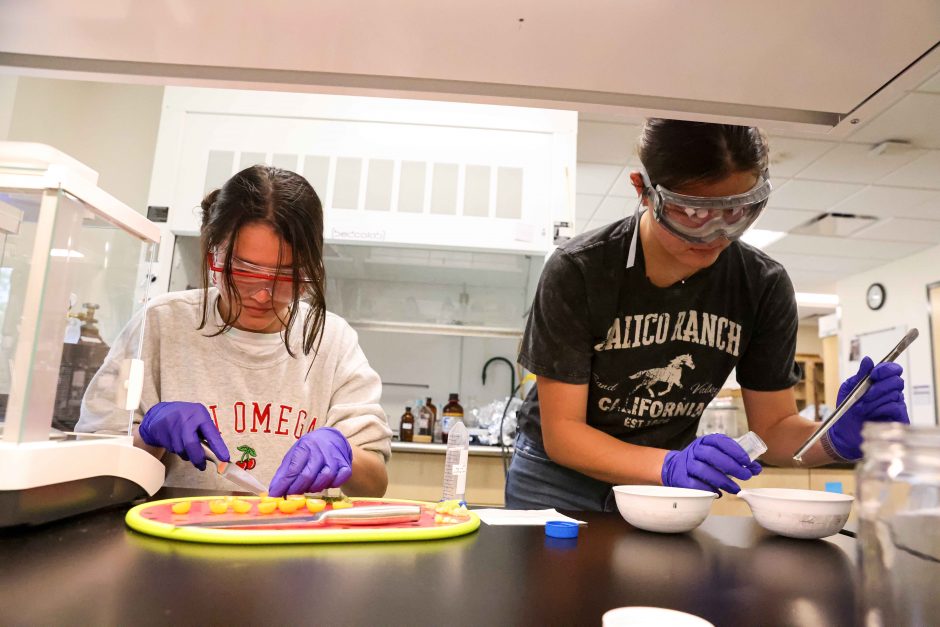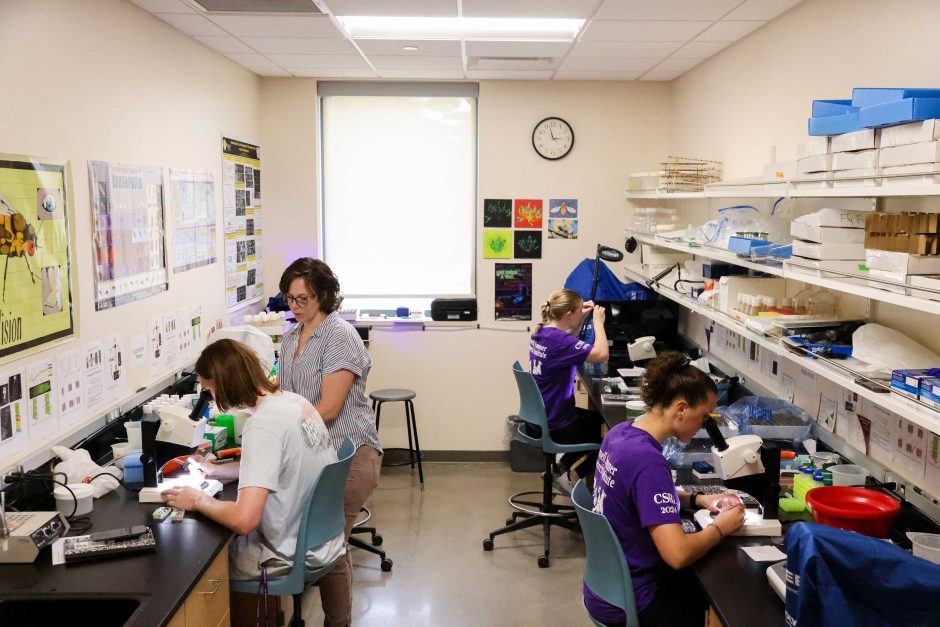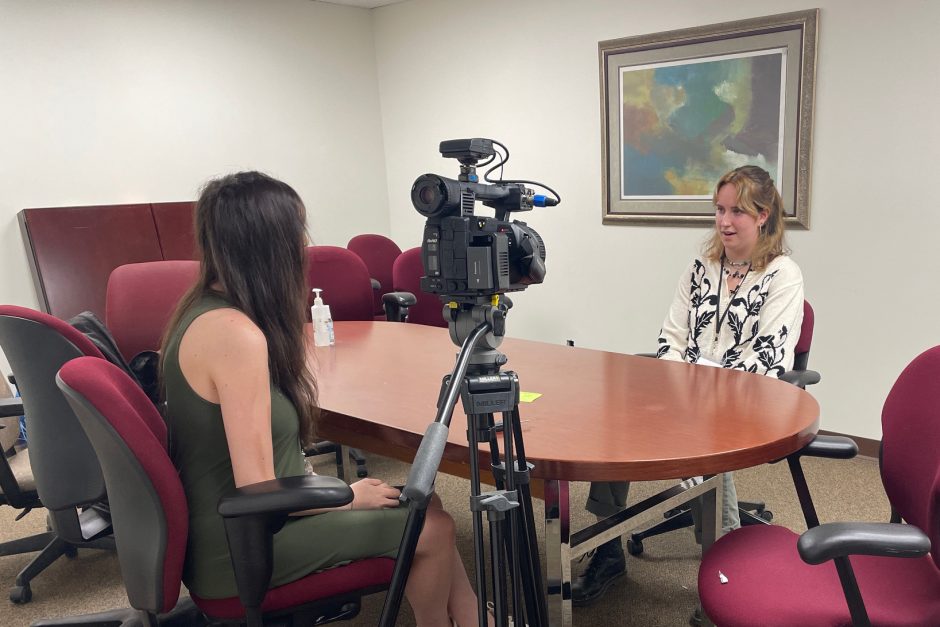4 decades, One Course: The block plan turns 40
You may have heard it recited at Homecoming or read it in these very pages. It’s the story of how Dean Robert Lewis, champion of innovation, trekked his way to Colorado, learned the ways of the block plan, and brought them back to Cornell College. It was the story of the college’s modern transcendence, one as etched into Cornell lore as Ink Pond or The Rock.
In the beginning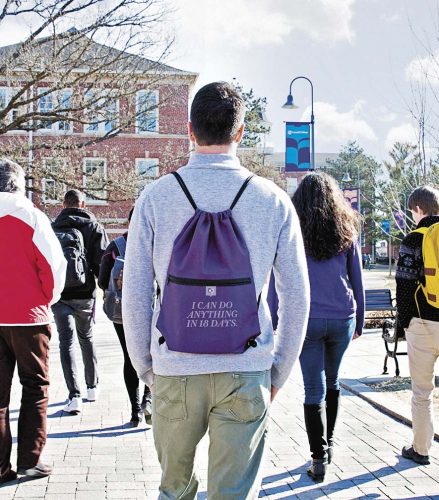
The first class to go through all four years of One Course At A Time was the class of 1982, which entered in the fall of 1978. Beth Becker ’83, now a professor of biology in Elgin, Illinois, wasn’t very far behind when she made a very snowy campus visit in the winter of 1978.
“Talking to students, they were all in their first year of it. A lot of them had regular classes the year before or two years before. People seemed to have a pretty positive attitude about it,” Becker said.
Those who had lived through the transition, she said, spoke glowingly about its positives. Her tour guide raved about how much better it was for track and cross country, because it was one set of deadlines, one set of homework. Students she spoke with in the wind ensemble echoed their love of the streamlined focus.
So Becker took the leap, despite the blustery, cold visit, and took a chance on Mount Vernon, Iowa. Though she had never experienced anything like One Course, everything clicked right away.
“I liked it. We had a lot of reading to do, but because it was the only class that we were dealing with, it was manageable,” she said. “It worked.”
Of course, not everything was perfect right off the bat. Professors and faculty were still figuring out the pacing on classes and what they could unlock with the new system. Becker, for example, said she took a genetics class that was later split into two blocks after she had taken it, “which was probably a very good thing.”
If you teach it, they will come
 Those first few years and the experiences of alumni like Becker started to have an impact in the mid-’80s when word of mouth began to spread to students like John Gilliland ’89.
Those first few years and the experiences of alumni like Becker started to have an impact in the mid-’80s when word of mouth began to spread to students like John Gilliland ’89.
“I had a friend who was a year or two ahead of me in high school who told me about it,” said Gilliland, a financial advisor with Morgan Stanley in Des Moines. “I just thought it was interesting, different. I was curious how it worked.”
It was the focus that Becker had found that also appealed to Gilliland.
“Thinking back to high school, there were courses that I didn’t like or particularly enjoy that dragged on through the semester, so I thought if I could take care of those classes, and get them done and over with, that seemed like a good idea,” he said.
Gilliland started his Cornell career with a political science class. This time it was Politics 101 with Rob Sutherland. And yes, politics majors, Sutherland was teaching “The Odyssey” back in 1985 as well.
“I just remember that you had the syllabus, and if you didn’t get those 100 or 200 pages read by the time the class met again, you were really behind. It really compounded quickly,” Gilliland said. “That’s the greatest value I got out of One Course. It cured you of any procrastination.”
The college was also starting to hit its stride finding other ways to get value out of the block plan. Where early classes were just trying to get their timing down, students in the ’80s began to find more opportunity in the flexibility of One Course, particularly in off-campus internships.
“I did two blocks of internships with Senator Grassley’s office in Cedar Rapids,” Gilliland said. “It wasn’t like I was just there for an hour or two a day—which might have been the case on a semester plan—I was there all day. I was able to get a full understanding of all the various issues that elected officials can deal with in a day.”
Gilliland took full advantage of the block plan’s time management advantages. He played football, he was active as a Gamma (he was president his senior year), he did an independent study on Habeas Corpus during the Civil War, he took Steve DeVries’ famous Boundary Waters class, and he even took a trip to Russia with Professor Robert Givens.
“Because of football and the fraternity, I would have never gone and done a full semester abroad like that,” he said. “But because I was able to go for just one block, that was a remarkable experience.”
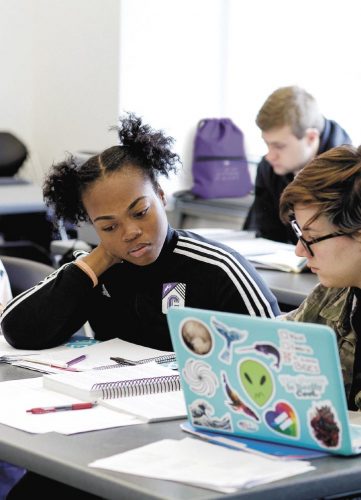
Expanding reach
One impetus for Lewis’ dive into One Course was the college’s flagging attendance. A college in rural Iowa could speak well to Midwestern students, but convincing students from Texas or Virginia or, say, Boston, was difficult.
“It was kind of rare at the time that there was a guy from Boston that came to Cornell College.”
That’s Edwin “Ted” Carr ’90, a guy from Boston who came to Cornell College just a year after Gilliland.
Carr, who still lives in Boston where he serves as senior vice president for Energyzt Development Partners, had grown up across the street from Boston College, where freshman classes could have hundreds of students in the classroom. It wasn’t for him. He attended a small Catholic high school, and he wanted a small college and a liberal arts school. So he applied to a number of such colleges in the New England area—plus Cornell College.
“[One Course is] what drove me to apply there,” Carr said. “I remember in the application process that the marketing was fantastic. The school knew how to make a compelling case for itself. It was what made Cornell unique among accomplished liberal arts colleges in America.”
It was One Course and Cornell’s small class size that, in a way, Carr credits for launching his career in public service. He says the individualized attention he received from Professor David Loebsack—now a United States Congressman—helped launch Carr’s career—a career that led him to the White House and 10 years in Washington, D.C.
Thanks in large part to that attention and to the flexibility of the block plan, Carr started in politics. He drove Michael Dukakis around during the 1987-88 presidential campaign. He wrote a paper on the presidential debate prep process—while actively participating in it.
“You did not have to look far to find great help. That doesn’t exist in education today. That doesn’t exist in some liberal arts schools now,” Carr said. “It’s the secret sauce of Cornell College that people don’t appreciate until you go there. Going to Cornell College was the best decision I ever made for myself.”
In fact, it was that secret sauce that led Carr to recruit the daughter of a family friend—Robin Nilsson. And, spoiler alert, she’s class of 2021.
“She just loved the story of Cornell and is self-motivated,” Carr said. “I recommended her, but she got in all on her own.”
Deborah Prespare ’98 had a similar experience with Cornell’s One Course marketing.
“I heard about it by going to the library—this was pre-internet time—and checking out those giant college catalogues. I was looking at Cornell University and I saw Cornell College right above it,” Prespare said.
So she typed up—yes, on a typewriter—a letter asking the school for more information.
“When I got that initial packet, I was hooked,” she said. “It was really the opportunity to spend a lot of time thinking about a single subject. I like to dive deeply into things. That was the hook for me.”
“It just sounded luxurious.”
20 years in
And it was. That’s me saying that, Blake Rasmussen, class of 2005. It was One Course At A Time that hooked me as well. That and the all-you-can-eat cereal in the cafeteria.
It was the soccer coach at the time who put a bug in my ear. I could play soccer, I could study, and I could figure out what I was doing along the way. Like Becker, like Gilliland, like Carr (who played football), and like so many others, One Course was the perfect marriage of athletics and academics.
Also, like Carr, I credit the individual attention of the politics department with launching my career. Sutherland—my advisor—set up my job as a writer for the Mount Vernon-Lisbon Sun, where I covered sports and politics, including the 2003 caucuses. Later, I started working with Cornell’s communications office part time, which eventually became full time years later.
Their connections even landed me an internship with ABC News, where I was able to take several blocks off to work in Washington, D.C., with the likes of George Stephanopoulos and Peter Jennings. Without my professors, I never would have launched my career
in journalism.
And during block breaks, I would travel to play in tournaments for a game called Magic: The Gathering. It had been a hobby of mine for some time, but One Course’s flexibility meant that at least once a month I could dive in.
Now, I work for Wizards of the Coast, the company that makes Magic: The Gathering, where I still get to write and serve as editor-in-chief for our main website, marketing and talking to our 20 million-some fans around the world. Neither of those things would have been possible without Cornell—and likely not without One Course.
“It’s the possibilities for more experiential learning,” said Joe Dieker, vice president for academic affairs at Cornell. “The opportunities that are available to our students because of One Course At A Time are amazing.”
The college has also upped its game with professional programs to meet the needs of the 21st-century student since I graduated in 2005, Dieker said, and is currently undertaking a project to renovate the core curriculum to bring more innovation and take full advantage of the block plan.
“What One Course probably did for this college was move it from a small college in Iowa that wasn’t very well known to one of the 100 best in the nation that’s really well known for what it is,” Dieker said.
Here’s to 40 more
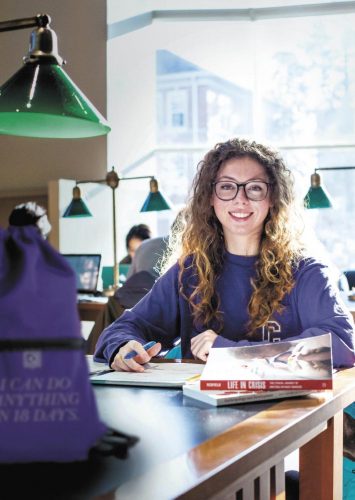
Which brings us to today and back to Robin Nilsson ’21. Not even a year into her time at Cornell and already she may be the block plan’s biggest fan. And her reasons are much the same as Becker, Gilliland, Carr, Prespare, or any of the thousands of students who have passed through the Hilltop. But it goes doubly-so for a generation that is almost forced to multitask.
“When you go to 12 years of regular school—and you’re juggling all these classes at once—it takes a lot of energy just to juggle all of that material, let alone retain all of that information,” Nilsson said. “The block plan gives you more control, and I’d say even more predictability and structure.”
Of course, much has changed as well. For example, Nilsson has designed her own major—international anthropological marketing, a burgeoning field that probably didn’t exist five years ago. It’s that kind of flexibility that makes Cornell attractive to this generation of students.
“Once I explain One Course At A Time, it sells itself,” she said. “I just need to explain it, and then they’ll know what they want.”
And that’s the hook for One Course At A Time—it is exactly what so many students want and need, even if they didn’t know it. It’s part of who they are, and certainly part of what makes Cornell what it is today.
“How can a college compete and set itself apart in that world?” Dieker asked. “The block plan has helped in that. It’s what we do, and it’d be hard to imagine Cornell College without One Course At A Time. It’s who we are.”
Blake Rasmussen ’05 is a writer and editor in Seattle, Washington, where he works his dream job as content manager for Wizards of the Coast.

